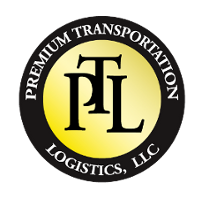Looking Both Ways

Understanding Carrier Mileage Limits

Your Company’s Mileage Limit Policy Explained.
This post of Looking Both Ways will attempt to explain the reasoning on company maximum mileage policies. You know that policy that states that a solo driver may only drive 550 or maybe 575 or maybe 600 miles maximum straight through. This policy even applies to operators of cargo vans or vehicles having GVW of less than 10,000 pounds. After reading this post you should be able to better understand why it is so important for you to abide by this policy to protect yourself and the company you drive for.
In the simplest terms - the DOT regulations limit a drivers driving time to 11 hours within a 14 period after a 10 hour break. How many miles can a driver legally drive in those 11 hour? 605 is the magical number that my research has proven to be the ABSOLUTE MAXIMUM amount of miles that a driver can drive within that period. The carrier you operate for may have a differing opinion and policy regarding maximum miles. Please do not ask your carrier to change their policy after reading this post. The purpose of this post is to understand consequences of negligence – not determine what should be the industry standard for mileage in legal hours.
Many carriers limit their drivers to 550 or 575 miles. I believe that 605 miles is the maximum number of miles that I could successfully testify in a court of law that a driver could do under average, normal circumstances. Why talk about testifying in a court of law? When a driver has an accident, and causes physical harm or possibly death, the injured party (or their family) has a right to be compensated for their losses. If the trucking company and the driver have done absolutely everything legally, the insurance company of the trucking company will pay to that plaintiff the amount of their losses up to the limits of the trucking company’s insurance policy – usually $1 million dollars. Many trucking companies carry “excess†liability, usually in additional $1 million dollar increments, in case an accident involved multiple injuries or multiple deaths where $1 million is NOT sufficient to pay the claim. Other considerations given when determining amounts of awards – are age, education and earning potential and so on of the deceased or injured person. Should the amount of a plaintiffs claim be awarded above the limits of the insurance policies carried by the trucking company, the plaintiff typically seeks the difference from the assets of the trucking company and any owners or partners of the trucking company. The assets of the individual owners or partners are not safe from being liquidated to satisfy a plaintiff’s claim. The “corporate veil†of a corporation can be “pierced†to satisfy a judgement or award to a plaintiff. Again, these actions can happen even when the actions of the carrier and the driver were in total compliance of the DOT regulations. The DOT does NOT have a recommended maximum mileage number. The DOT does have a maximum amount of time a driver may drive.
What happens when a driver drives longer than the DOT regulations allow and has an accident after that 11th hour – even 1 minute after that 11th hour? The driver and the company are negligent. Pretty easily proven in a court of law – did, or did not the driver exceed the 11 hour driving rule? Yes or No – excuses and explanations are not accepted. Yes or No – did the driver exceed the Hours of Service Regulations? If the answer is yes, then negligence is easily proven. The same holds true if the Commercial Motor Vehicle driver is speeding, following too close, an improper lane change, or any other violation of driving laws. Was the driver speeding, or did the driver fail to maintain assured clear distance? Again, if the answer is yes then the driver and company were negligent. Once negligence is established the award to the plaintiff begins to include “punitive damagesâ€. Guess what? Insurance does not pay punitive damages. Who pays for the punitive damages awarded to the injured plaintiff? – the trucking company and possibly the driver and possibly the dispatcher. Chances are the company will be left to bear most of the burden of the judgment as the driver does not possess sufficient assets to satisfy the huge award. The same is probably true with a dispatcher guilty of negligence. Another reason the company bears the primary burden is because the dispatcher and the driver - yes, even an owner operator – are viewed as being in the “control†and “employ†of the company.
The mileage or distance limits can easily be translated to cargo vans and other vehicles having GVW of less than 10,000 pounds. Though the DOT does not regulate the hours that drivers of these vehicles can legally drive, the lack of such laws do not eliminate the potential for negligence. Surely juries in a court of law will deem both drivers and carriers negligent in accident cases where the driver has driven long hours and many miles.
Though contractors (owner operators) are independent business people and have many responsibilities, the motor carrier is still held liable for the actions of the independent business or person they have contracted. This is why owner operators are expected to comply with the rules and policies of the motor carrier, as well as the DOT regulations. Granted Owner operators pay for their truck, their taxes, their worker’s comp and other insurances, but they do not pay for the insurance that protects the general public while under load or dispatch of the carrier. The owner operator agrees to the policies and procedures of the Carrier when signing the Carrier’s lease agreement. The expectation that the owner operator or driver abide by these polices and DOT Regulations is no different than the driver or owner operator’s expectation that the carrier fulfill their obligations with correct pay and so on.
Business is a two way-street that must be mutually beneficial for both parties, and is best done with mutual respect for the agreements or covenants agreed originally agreed to.
Disclaimer: This blog is NOT intended to give legal advice, nor be a substitute for any training required by the Regulations.
Till the next blog, Thank you drivers for all you do!. Please be safe!
Click here to read more of my blogs!
John Mueller, CDS, COSS

